In our previous discussions, we talked about the strategies that defines the luxury brand experience, unveiling the subtleties and complexities unique to this elite sector. Now, we shift our gaze to a more tangible aspect: the underlying business model that sustains true luxury brands. Here, we'll discuss how these brands achieve profitability, focusing on what products drive their financial success and how they balance the scales of exclusivity and accessibility.
This examination is crucial, especially when juxtaposing the unadulterated business models of privately owned luxury brands against the operational realities of public luxury companies. The latter often find themselves in a challenging position, having to reconcile the stringent demands of luxury's purist approach with the relentless pressure from shareholders and the market for continuous growth. This tension often leads to compromises, diluting the pure essence of luxury that thrives in a landscape of meticulous control, limited accessibility, and unwavering commitment to heritage and craftsmanship.
We will see how it becomes increasingly clear that public luxury companies face a unique set of challenges. They must navigate a delicate balance, striving to adhere to the traditional tenets of luxury while simultaneously addressing the demands of a broader market and shareholder expectations.
Welcome to Edelweiss Capital Research! If you are new here, join us to receive investment analyses, economic pills, and investing frameworks by subscribing below:
Foundational Principles
1. The Primacy of the Brand Universe and Its Control
The brand universe refers to the entire ecosystem in which the brand operates, including its heritage, story, values, aesthetics, and clientele. For luxury brands, this universe is deeply rooted in exclusivity, craftsmanship, and a rich history. Controlling this universe means ensuring that every aspect of the brand, from production to distribution, aligns with its core principles.
The intricacies of this universe go beyond mere product creation and marketing; it’s about weaving a narrative that is both alluring and consistent, which speaks to the discerning clientele who value not just the tangible product, but also the intangible ethos of the brand. The essence of control in the luxury brand universe is about orchestrating an immaculate symphony of experiences that resonate with the brand’s philosophy, leaving no room for discordant notes. It’s about sustaining an equilibrium between innovation and tradition, ensuring the brand remains relevant while honoring its roots.
To illustrate this concept further, a brand’s choice of distribution channels is not merely a logistical decision but a strategic one that contributes to the narrative of exclusivity and prestige. Where and how the products are available communicate a subtle message about the brand’s positioning in the hierarchy of luxury.
Patek Philippe cultivates its own universe through a myriad of ways, primarily anchored in its unwavering commitment to tradition, craftsmanship, innovation, and exclusivity. It remains one of the last family-owned independent watch manufacturers in Geneva, allowing it to make decisions that are intricately aligned with its long-established values and traditions, uninfluenced by external pressures and undistorted by conflicting interests.
The essence of Patek Philippe lies in its unparalleled craftsmanship and relentless pursuit of horological perfection. Each timepiece is a work of art, handcrafted by master watchmakers, embodying centuries-old skills passed down through generations. The brand’s innovations in watchmaking have earned it over 100 patents, attesting to its commitment to advancing the field while honoring its heritage.
Patek Philippe honors its heritage by embodying the philosophy, "You never actually own a Patek Philippe. You merely look after it for the next generation." This is not merely a tagline but a representation of the brand's commitment to creating timeless pieces designed to be passed down through generations. This philosophy underlines the timeless value and enduring appeal of its creations, elevating them beyond mere timepieces to cherished heirlooms.
The brand ensures exclusivity not only through limited production but also through fostering intimate and enduring relationships with its clientele. The buyers are often connoisseurs of fine watchmaking, appreciating the intricate mechanics, detailed craftsmanship, and timeless elegance that define every Patek Philippe timepiece. The brand’s personalized and discreet service further enhances its allure, creating an aura of privilege and distinction around owning a Patek Philippe.
Patek Philippe’s steadfast refusal to compromise on price integrity is another pillar in maintaining its brand universe. The brand does not entertain discounts, maintaining the perceived and real value of the timepieces, which are viewed as investments, appreciating assets rather than depreciating luxuries.
2. The Importance of Maintaining a Genuine Core Range
A core range is the heart and soul of a luxury brand. It’s a compilation of timeless pieces or collections that are interwoven with the brand's history, symbolizing the brand’s quintessence and reflecting its enduring values and aesthetics. These pieces are the embodiment of the brand’s mastery and craftsmanship, and they illustrate the brand’s journey, evolution, and commitment to excellence.
Maintaining this genuine core range is crucial as it offers a touchstone of authenticity and consistency for the clientele. It enables the brand to establish a strong, coherent identity and a sense of timeless elegance, allowing the clientele to form a deeper, more meaningful connection with the brand.
Maison Goyard has a rich heritage dating back to 1853. Goyard specializes in handcrafted trunks, luggage, and leather goods. The brand is renowned for its distinctive, refined designs, and its commitment to traditional craftsmanship and exclusivity.
Maison Goyard’s core range, notably its iconic Chevron canvas patterns and sophisticated leather goods, reflect the brand’s unique artistry, meticulous attention to detail, and uncompromising quality. These pieces are not mere accessories; they are a testament to the brand’s legacy, its artisanal spirit, and its unyielding dedication to sartorial elegance.
3. Achieving Profitability Primarily on Mid-Range Products
While luxury brands often have ultra-premium and entry-level products, the bulk of their profitability comes from their mid-range offerings. These are products that, while still luxurious, are more accessible to a broader clientele. They strike a balance between exclusivity and accessibility, allowing the brand to achieve scale without compromising its luxury stature.
This strategic positioning is pivotal; it allows the brand to amplify its reach and enhance its revenue streams without diluting its illustrious charm. By grounding the majority of their sales in these mid-range offerings, luxury brands can ensure their financial robustness while still being able to craft those spectacular, high-end masterpieces that elevate their prestige and captivate imaginations.
Rolex, a privately owned luxury titan, exemplifies this principle astutely. While its collection harbors timepieces that are synonymous with ultimate luxury, it’s the brand’s mid-range watches that are often the silent workhorses, fostering brand accessibility and driving its enduring success.
Product Schema
For a luxury brand, the product schema is not a mere assortment of offerings; it is a meticulous portrayal of the brand’s essence, expertise, and exclusivity.
1. Very Short Product Range
The essence of opulence is not quantity but the rarity and unrivaled quality of the products. When a luxury brand maintains a concise product range, every item is a distilled representation of the brand’s ethos, craftsmanship, and aesthetic values. This singular focus transforms each piece into a work of art, echoing the brand’s unique narrative and design philosophy. The scarcity of such masterpieces renders them even more desirable, creating a magnetic allure that captivates connoisseurs and collectors alike. It’s about creating pieces that are unparalleled, exuding a timeless charm and sophistication that make them the coveted treasures of those who possess them.
Manolo Blahnik, with his distinctive and profound approach to footwear design, exemplifies the embodiment of this principle. By steadfastly concentrating on a finite array of iconic designs, the brand maintains a realm of exclusivity and supreme artistry, keeping its offerings as unique as they are exquisite. Each pair of shoes conceived by Manolo Blahnik is more than a mere accessory; it is a representation of Blahnik's fervent dedication to artistic excellence and impeccable craftsmanship.
The emphasis on a limited product range enables Manolo Blahnik to invest an unparalleled level of thought, time, and artisanal skill into each design. This not only ensures the perpetuation of the brand's unparalleled quality and aesthetic values but also augments the intrinsic allure and exclusivity associated with owning a pair of Manolo Blahniks. The limited availability and the exceptional quality of these creations evoke a sense of unattainable elegance, igniting an enduring desire among aficionados of luxury footwear.
In this way, the scarcity and the supreme artistry of Manolo Blahnik’s creations interweave to intensify the brand's mystique and elevate its status in the world of luxury fashion. The brand doesn’t merely offer footwear; it offers a timeless journey into a world of elegance, where each step is a dance between unparalleled craftsmanship and refined aesthetic sensibility, making each pair a cherished masterpiece in the wardrobes of those who have the privilege to acquire them.
2. Offer Limited High-End Image Products
The offerings at the summit of a luxury brand’s collection are embodiments of the brand’s utmost capabilities in craftsmanship, innovation, and design. They are the magnum opuses, showcasing the pinnacle of what the brand can achieve. These high-end image products, with their inimitable quality and exquisite design, aren’t meant to be mass-market attractions. Instead, they serve as shining beacons to the brand's commitment to unparalleled excellence and artistic brilliance. They are, in essence, the brand’s flag bearers, transcending conventional paradigms and setting unparalleled standards in luxury.
While these products might not be the ones that garner extensive sales, they play a pivotal role in carving the brand's identity and upholding its status. They are the lure for the ultra-affluent, who seek to possess not just products, but symbols of utmost exclusivity and unmatched craftsmanship. These pieces, with their elusive charm, become the dream of connoisseurs and elevate the brand’s allure, allowing it to be perceived through a lens of unattainable perfection and timeless elegance.
A. Lange & Söhne, a privately-owned purveyor of fine German watchmaking, exemplifies the principle of offering limited high-end image products with its extraordinary and rare timepieces. Every piece in their collection is a manifestation of meticulous craftsmanship, innovative design, and watchmaking prowess, serving as a beacon of the brand’s illustrious heritage and commitment to horological excellence.
Models like the Zeitwerk Minute Repeater and the Grand Complication are paradigmatic of this commitment, each representing the pinnacle of A. Lange & Söhne's watchmaking artistry. These timepieces are not just instruments of timekeeping; they are objets d’art, radiating a level of refinement and sophistication that is rarely paralleled in the horological world.
The extremely limited availability of these masterpieces amplifies their allure, making them the holy grails for collectors and aficionados. The possession of such a piece is not just a statement of wealth but a testament to the owner’s discerning taste and appreciation for the quintessence of watchmaking.
Through these high-end image products, A. Lange & Söhne fortifies its image as a brand that transcends conventional luxury, offering creations that are the embodiment of unparalleled excellence and timeless elegance, revered by connoisseurs and the ultra-affluent clientele alike.
3. Strictly Limit the Number of Entry-Level Products
Entry-level products act as gateways to the brand. They are the welcoming portals that introduce a wider audience to the brand’s realm, a first step into the world of luxury for many. While they play a pivotal role in expanding brand recognition and attracting new admirers, the scarcity and selectiveness of these products must be meticulously preserved. Flooding the market with too many entry-level offerings risks diluting the brand’s aura of exclusivity and its appeal to its core, affluent clientele. It's imperative that these products, though more accessible, continue to exemplify the brand’s signature craftsmanship, aesthetic, and values, serving as true representatives of the brand’s heritage.
4. Focus on a Carefully Curated Core Range
This is the brand’s heartbeat, products that encapsulate the brand's essence and history. These classics are not just products; they are the narrators of the brand’s story, each piece a chapter enriched with the brand’s values, traditions, and innovations. They are the epitome of the brand’s identity, serving as enduring symbols of its legacy and its contributions to the world of luxury.
A truly luxury brand zeroes in with unwavering focus on its core range, recognizing these enduring creations as the pillars of its profitability. It is a delicate dance between heritage and innovation, where the brand resists the allure of overexpansion and remains steadfast in curating a range that reflects its essence and history. In a world where excess is common, luxury finds its strength in restraint, meticulously selecting each piece that bears its name. Meanwhile, high-end innovations are the playground where the brand reaches for the unachievable, pushing the boundaries of craftsmanship, design, and luxury. It is here, in the pursuit of the extraordinary, that the brand reinforces its status, creating artifacts of unparalleled excellence and allure, each a testament to the relentless pursuit of perfection that defines true luxury.
Distribution Control
1. Distribution is Limited to Specific Places and People
We have to be aware this is the main contact between the brand and its clients. It’s about sculpting an experience, a narrative, an encounter that is in perfect harmony with the essence of the brand.
By limiting distribution to specific places and people, luxury brands can cultivate an environment of exclusivity and prestige, keeping their treasures away from the mass market and instead, placing them in sanctuaries of opulence and discernment. This meticulous approach to distribution is a meticulous act of brand preservation, ensuring that every interaction, every purchase, and every revelation of the brand is a harmonious chapter in its enduring narrative.
Off-topic
Ah, let me share a funny little story. A buddy and I, in the noble quest of finding engagement rings for our girlfriends, wandered into Graff in Zürich, just to get some ideas. It was like stepping into another world, filled with glittering jewels and shining stones. I have to admit I had never heard of Graff before, and we were embarrassed to go into the Tiffany’s store close by.
I’ll admit, many/all pieces in that store were way out of our league, price-wise. It’s funny to think I was essentially doing a bit of market research for my future self, all without realizing it!
The atmosphere was rich with luxury, and the diamonds… oh, they were something else. The staff gave us the full experience, so much attention to detail, and tailored to our every need.
Our little adventure ended with the store assistant kindly sharing her WhatsApp number to send us more information and examples afterward. Who would’ve thought? It was a glimpse into a world of elegance and luxury, wrapped in humor and marked by our cheerful exploration.
Walking away from that place, I couldn’t help but smile and think, maybe those sparkles and glimmers were not just reflections of light but amusing hints for our future paths!
2. Profitability and Brand Value Through Controlled Distribution
Meticulous management of where and how products are distributed is a keystone in maintaining a prestigious brand image and, subsequently, profitability. It's not about ubiquity but about strategically placed, and sometimes scarce, stores that echo the brand’s values and essence.
Luxury brands, by habituating to a practice of controlled distribution, can safeguard their products' intrinsic value, allowing for substantial markups (there is no need to share margins with your partners or retailers). The stores, although often synonymous with opulence and grandeur, are kept limited in number. This careful dance between availability and scarcity is not merely a commercial strategy; it’s a meticulous art form.
This strategic exclusivity doesn’t just uphold the brand's allure; it acts as a catalyst, propelling demand to stratospheric levels. It is this engineered desire that gives luxury brands the leverage to position their products at premium price points, keeping the aura of luxury undiluted and pristine.
Pitfalls to Avoid
In luxury branding, managing the authenticity and exclusivity of the brand is crucial. Foremost among the pitfalls is the descent into illegitimate diversification. To stray too far from the brand’s core range is to dilute its essence and to extinguish the exclusive flame that fuels its allure. Luxury brands must navigate the fine line between innovation and authenticity, avoiding extensions beyond their legitimate territories, thereby safeguarding their enigmatic charm.
In the pursuit of daily operations, brands must eschew unnecessary extravagance in expenditures and hires, directing resources towards the enhancement of the brand dream. The endeavor is not to embellish the mundane but to elevate the extraordinary. Avoiding internal lassitude is pivotal; the constant rejuvenation and refreshing of brand offerings should never stray from its intrinsic essence. It’s vital to perceive that the rhythm of internal teams might diverge from the enduring admiration customers harbor for signature products.
A luxury brand’s history is its guiding star, a whisper of eternity that reverberates through its every creation. Rejecting the past or embracing overly radical shifts leads to a dissonance in the brand's symphony of heritage and identity. It is the brand's foundational legacy that weaves the tapestry of its timeless allure.
Vertical integration brings with it the temptation of rigidity. A harmonious balance between integration and flexibility is crucial to ward off cost drift and maintain an openness to innovation, ensuring the brand remains a living, breathing entity of luxury.
Why are these principles a challenge for a luxury public company?
In essence, while the real and exclusive luxury business model is undoubtedly successful for luxury brands, navigating its intricacies is challenging/impossible, especially for publicly traded companies with their inherent growth pressures. Successful brands strike a balance, ensuring they grow without compromising the core principles that define their luxury stature.
Market Pressures: Public companies are under constant scrutiny from shareholders and are subject to pressures to deliver consistent quarterly growth. This often pushes them to expand and diversify rapidly, potentially diluting the brand's essence and unique selling propositions. The need for volume can conflict with the principle of exclusivity, a core characteristic of luxury.
Brand Control and Heritage: Maintaining the primacy of the brand universe requires a meticulous control over every aspect of the brand, from its heritage and craftsmanship to its distribution. Public companies, driven by a diverse group of stakeholders with varying interests, might find it challenging to maintain this level of control, leading to potential compromises in brand integrity.
Core Range Dilution: The pursuit of broader market appeal and higher revenues may lead to an overextension of product lines, risking the dilution of the genuine core range of products that define the brand’s heritage. Shareholder pressures may force the introduction of products that align more with market trends than with the brand's traditional values and aesthetics.
Short-termism: The focus on short-term financial performance often conflicts with the long-term vision required to maintain luxury brand value. Quick, revenue-generating strategies might overshadow the slow, meticulous craft of building products that uphold the brand's luxury status.
Customer Centricity versus Exclusivity: Public companies are often pushed to be highly customer-centric, adapting quickly to consumer demands and preferences.
In conclusion, navigating the industry of luxury brands is akin to crafting a serene symphony of exclusivity and time-honored tradition, where every detail is a note in a harmonious melody of enduring elegance. The journey to uphold the essence of the brand while fostering innovation is a subtle dance, one conducted in the whispers of timeless elegance rather than in the glaring spotlight of transient trends.
It’s intriguing to realize that the brands highlighted in our discourse are privately owned gems, a subtle echo of the paradox that lies in maintaining sanctity in the public domain. The persistent clamor for growth from shareholders and the meticulous scrutiny of the market render it a near-impossible feat for public companies to maintain such pristine levels of exclusivity and unadulterated focus.
In our upcoming post, we'll pivot to examine how these public luxury entities adapt and evolve within the constraints of shareholder expectations and market pressures. We'll delve into the innovative strategies they employ to reconcile the pursuit of growth with the preservation of luxury's core values. Stay tuned.
If you enjoyed this piece, please give it a like and share!
Thanks for reading Edelweiss Capital Research! Subscribe for free to receive new posts and support our work.
If you want to stay in touch with more frequent economic/investing-related content, give us a follow on Twitter @Edelweiss_Cap. We are happy to receive suggestions on how we can improve our work.
References & bibliography
Kapferer, J.N., Bastien, V. (2009). The Luxury Strategy: Break the rules of marketing to build luxury brands.
Pierre-Yves, D., Fujioka, R. (2017). Global Luxury: Organizational Change and Emerging Markets since the 1970s
Pierre-Yves, D. (2014). A Business History of the Swatch Group: The Rebirth of Swiss Watchmaking and the Globalization of the Luxury Industry
Rambourg, E. (2020). Future Luxe: What's Ahead for the Business of Luxury
Sky Documentaries. (2022). Kingdom of Dreams.





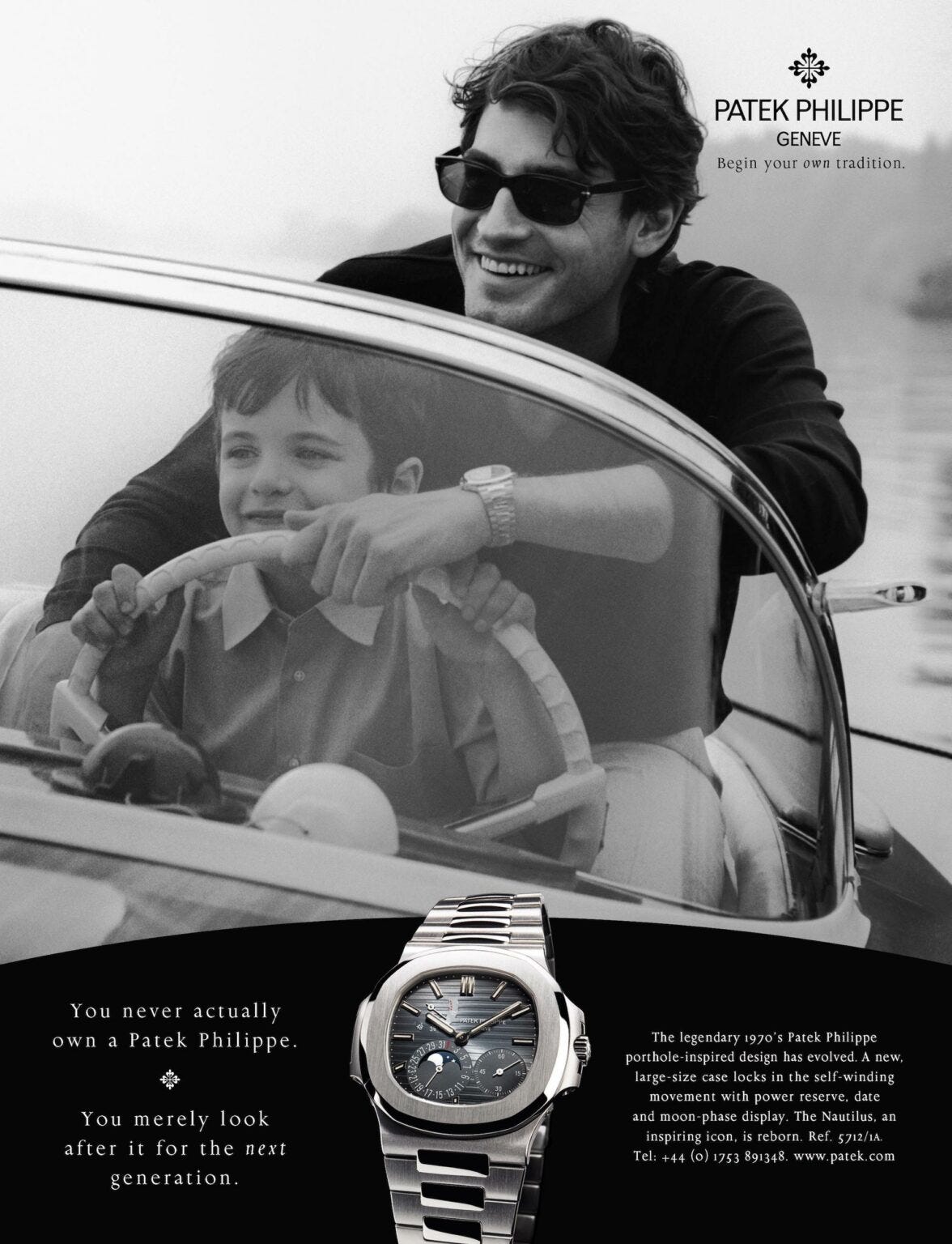

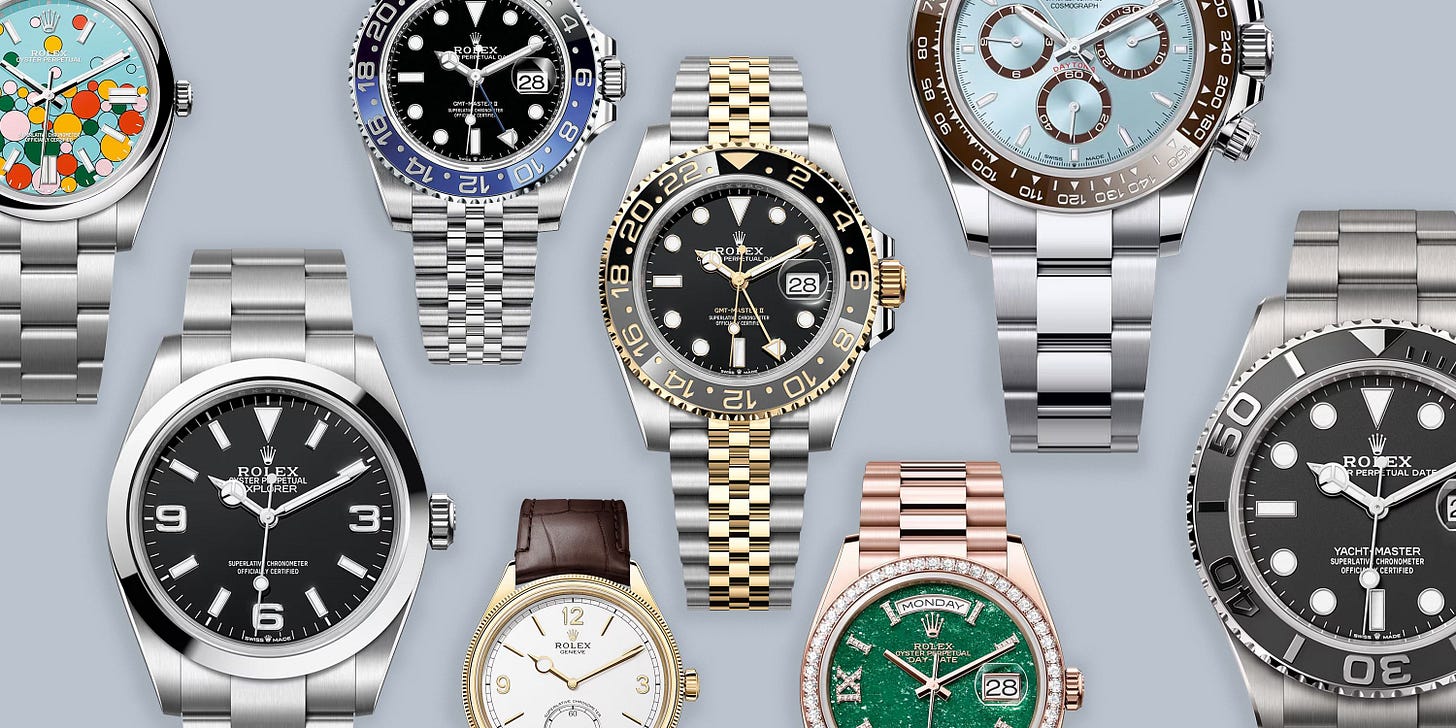

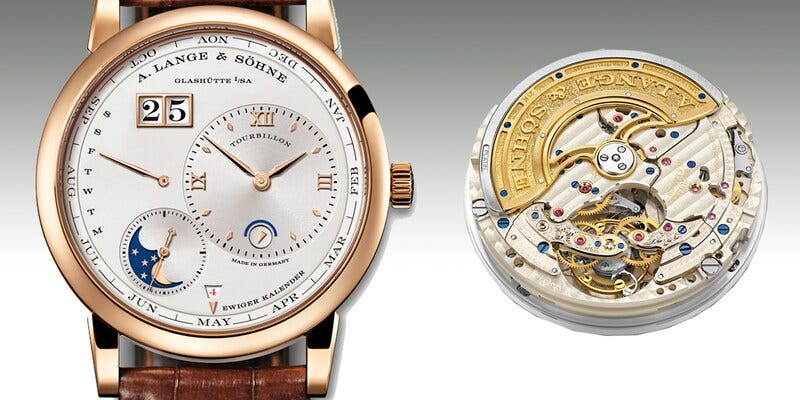
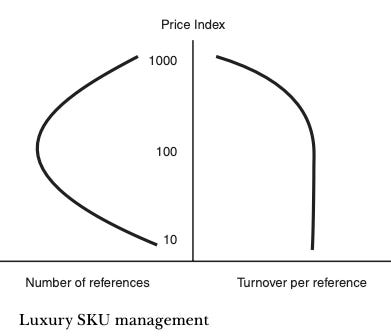
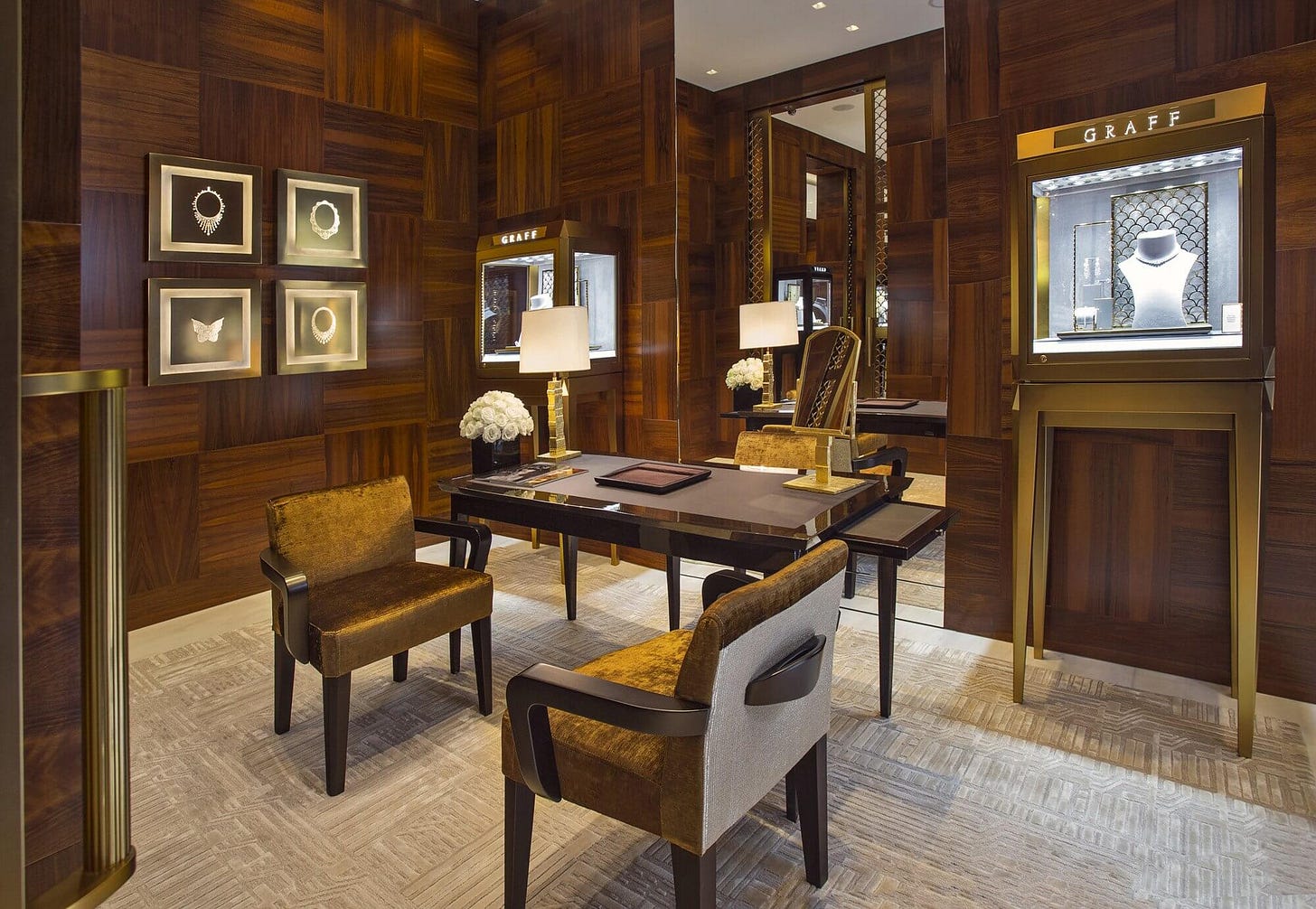
The series on luxury is well-done and informative. Thank you for sharing.